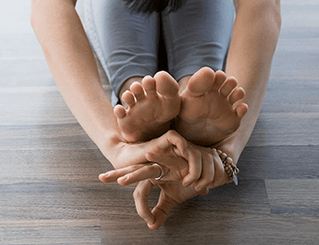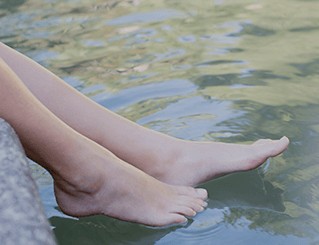Meditation/mindfulness is called a practice for a reason. Getting the hang of it requires an investment of time and patience. And there is no end point. Its benefits for arthritis come with regular, sustained participation.
Getting Started
Andrea Minick Rudolph, a meditation expert and therapist based in Camp Hill, Pennsylvania, suggests people start with some sort of guided practice, either in a local group setting or by using a book or tape.
Here are a few tips to get you started, especially if you’re using a book, tape, or online guidance.
Keep it brief. You might not have an hour a day to set aside for meditation, so start with a few 5-or 10-minute sessions a day.
“Aim to meditate for a total of one hour per day,” says Mark Thornton, a New York City-based meditation teacher. “Meditating for a few minutes throughout the day to add up to one hour is just as effective as meditating for a full hour.”
Be consistent. Daily practice is best. But if the idea of meditating daily feels too overwhelming, shoot for every other day, recommends Thornton. Once you feel the benefits, you may want to increase your practice.
Adjust your focus. To reap the rewards of meditation, it’s important to follow one simple guideline: Focus your attention. Bring your attention to something specific – your breath, a flickering candle flame, a simple mantra – and not your to-do list. Notice when your attention has wandered and gently guide your mind back. It doesn’t matter how many times you have to redirect yourself. Learning to steer your attention away from the endless stream of thoughts quiets the mind and promotes relaxation.
Techniques to Try
Want to try meditation? Here are some types you may consider.
Yoga breathing. Start and end your day with a short session of focused breathing. Sit comfortably, relax, inhale for four seconds and then exhale for six seconds. Focus on your breath. If your mind wanders, gently bring your attention back to your breath.
Active meditation. Meditation doesn’t have to be done in a dimly lit room while seated in the lotus position. You can meditate in the shower, standing in line at the supermarket, walking in the park, or even while washing the dishes.
Instead of listening to music through headphones or thinking about your to-do list while you walk, focus intently on your body’s movements and the sensations you feel. While washing dishes, take slow, deep breaths and feel the warmth of the dishwater as it covers your hands, watch the bubbles fill the sink, smell the scent of the detergent and hear the sound of the dishes clanking together. Continue that mindfulness throughout any activity to create meditation.
Guided imagery. Relax in a comfortable position and listen to a calming voice that guides your visualization. The voice guiding you may help you focus on a beautiful, relaxing scene; or a scene in which you experience your body in a healthy, vital state; or it will help you visualize your immune cells healing your joints.
Mindfulness-Based Stress Reduction (MBSR). This practice centers on being fully present in every moment in an open, nonjudgmental, loving way. If you feel a painful sensation in your knee, you acknowledge it, you don’t label it as negative, and you accept it. Many hospitals have programs that use this method of quieting thoughts.
Transcendental meditation. This form of meditation is performed while sitting comfortably with your eyes closed for 15 to 20 minutes in the morning and evening. The technique allows your mind to settle inward, through quieter levels of thought, until you reach a silent and peaceful awareness.
So get started with whichever form of mindfulness or meditation that appeals to you.
*Be sure to check with your healthcare professional to see if meditation is right for you.
Article from Arthritis Today, the consumer health magazine published by the Arthritis Foundation. Copyright © 2017 Arthritis Foundation. All Rights Reserved. For more information on this topic visit www.arthritis.org.









